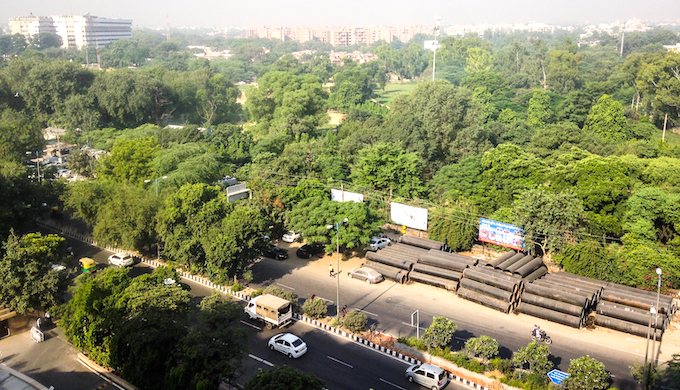Live Classes

Delhi’s administrative boundaries are limited and the space allocated for forests is also limited, yet every year the government sets an ambitious target of increasing the green cover.
The Delhi government has planned three major initiatives to increase natural community spaces in the city. These encompass transforming city parks, reclaiming water bodies and wetlands, and transformation of city forests.
Delhi has 17 city forests spread over more than 3,000 acres. However, most of the residents are unaware of these hidden jewels. The Delhi government has taken up a unique initiative to transform these city forests. Under this project, the government will not only open the doors of the city’s ecological heritage to its people but also revamp them with state-of-the-art but sustainable facilities. Rejuvenating these city forests and making them more accessible would also help reduce per capita carbon footprint by reducing the number of trips people take to far-flung locations outside Delhi for eco-tourism activities.
Delhi is one of the fastest-growing metropolitan areas of the world. Being the national capital, it attracts people looking for jobs as well as students from all over the country. There is intense competition for space, and planners and policymakers have a tough job of juggling priorities — for instance, planning a metro route without large scale felling of trees.
A unique problem of Delhi is the distribution of green spaces. The forested ridge runs through Central and South Delhi. East and Northwest Delhi do not have much forest cover to boast of. While it is important to provide world-class infrastructure for the capital city, it is equally important to ensure green spaces.
Delhi’s administrative boundaries are limited and the space allocated for forests is also limited, yet every year
the government sets an ambitious target of increasing the green cover. These urban green spaces — parks, city forests, wildlife sanctuary — collectively act as green lungs for the city. As temperatures soar, it is these green spaces that counter the urban heat island effect to cool the microclimate. They also prevent stormwater flooding by retaining percolating surfaces amidst concretised landscapes. The government, over the years, has successfully raised plantations on Gram Sabha and government lands, for conversion into city forests in accordance with the Indian Forest Act 1927 and Forest (Conservation) Act, 1980.
The vision for the city forests is to provide an ecologically benchmarked global standard that provides environmental, economic, and social benefits to the citizens of Delhi. The development of these forests also holds the potential of addressing the inaccessibility of green spaces in low-income neighbourhoods. Dialogue and community involvement would be a crucial part of the process. This would ensure that the resources being utilised for the creation of the green infrastructure in city forests responds to the needs of Delhi citizens. In order to achieve this, the government will not only invest in the development and ecological regeneration of these forests, but also develop innovative funding models that could further intensify the efforts to rejuvenate the landscape, enhance biodiversity as well as build local resilience against the effects of climate change. While every Delhi citizen can benefit from the development of these urban forests, it is often the most disadvantaged communities and socio-economically vulnerable groups that have the least access to high-quality green infrastructure.
Rejuvenation of these 17 city forests, which vary in size from 4 acres to 90 acres, form a pillar of the effort towards strategic regreening in order to prioritise mitigation and climate adaptation strategies for vulnerable communities. Another aspect of developing these city forests is that they can generate jobs. Development plans for city forests have a big component of ecotourism and many jobs would be created for naturalists, guides, birders, and other maintenance and protection works. These alternative livelihood opportunities would be first offered to people who live in proximity to these city forests.
Long-term scientific studies and monitoring within these city forests by experts would provide insight into urban forest dynamics — species composition, soil dynamics, carbon sequestration potential, and the costs of afforestation and managing designed spaces. The development of green patches in an ever-growing city like Delhi is no joke, it takes grit and determination to achieve it. But it is a worthwhile effort that has the potential to create a natural resource that will be an abode of recreation for not just the present but also the future citizens of Delhi.
Paper - 3 (Environment & Ecology)
Writer - Reena Gupta (an advisor to the Environment Minister of Delhi)
Download pdf to Read More